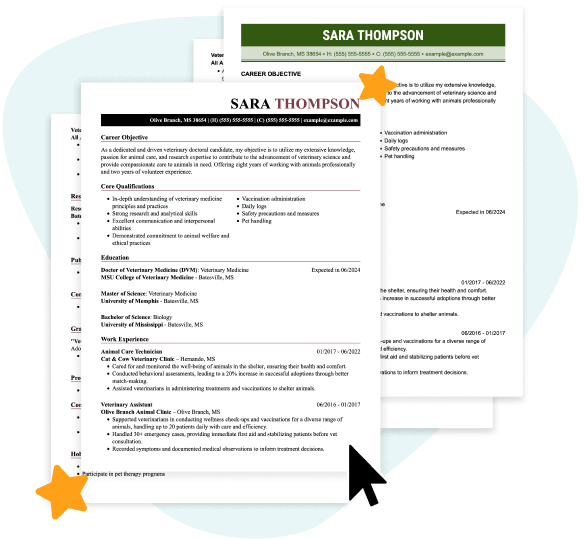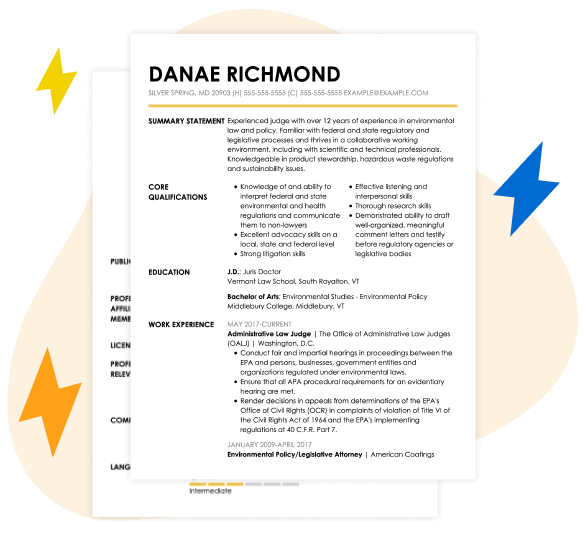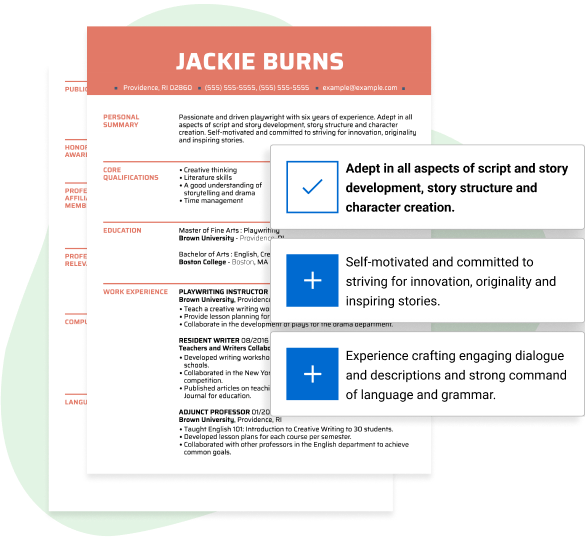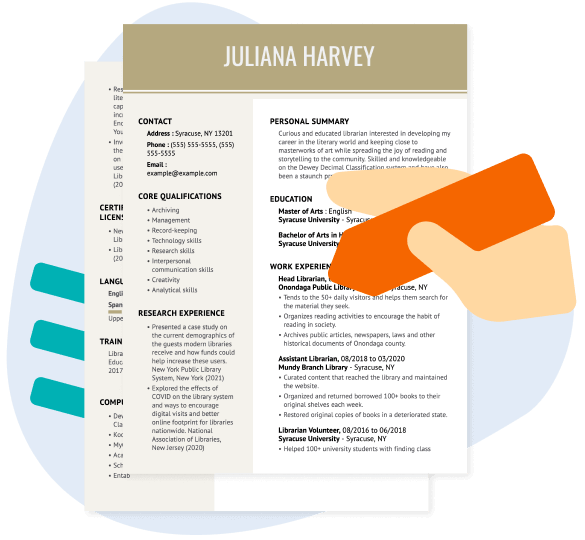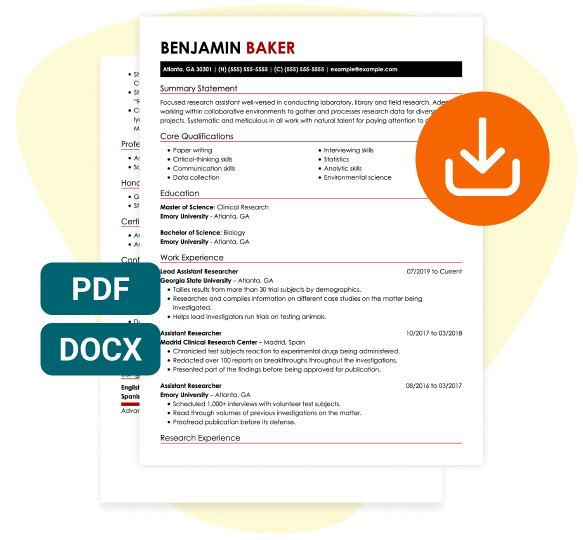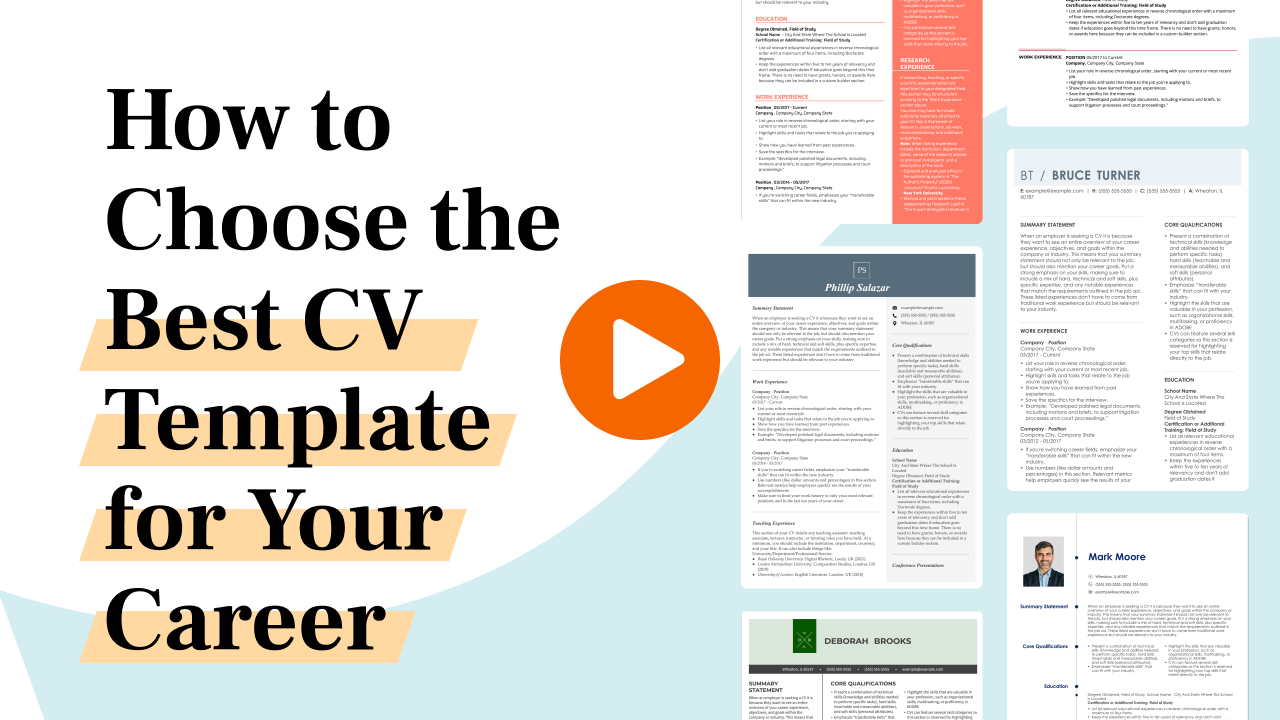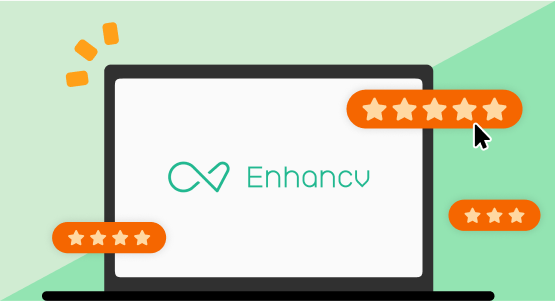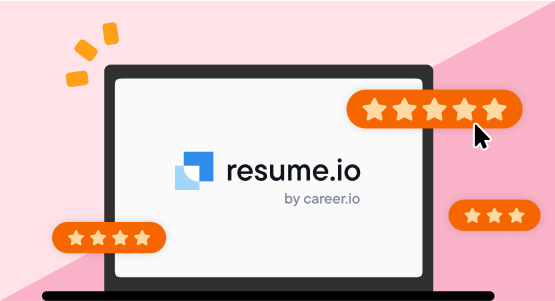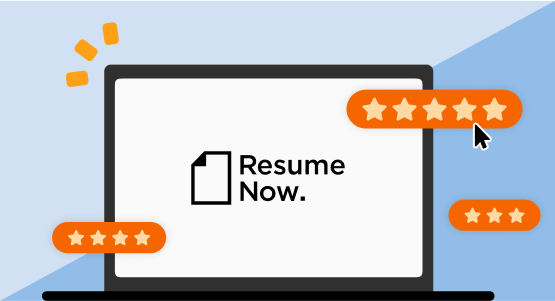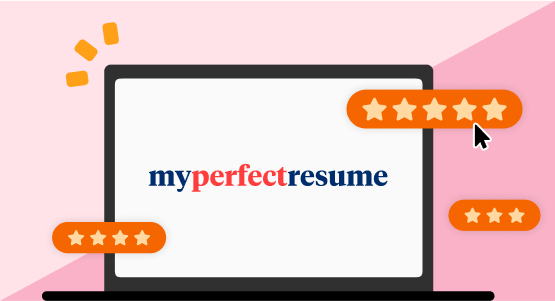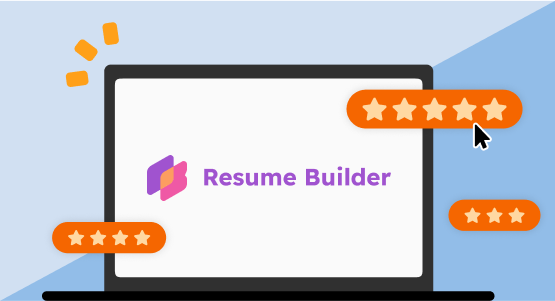6 Reasons to Use Our CV Templates
Professional-quality designs
Created by graphic designers, these templates make your CV look polished, up-to-date and easy to read.
Refreshes your existing CV
CV templates inject new life into your existing curriculum vitae, giving it a design refresh!
Passes applicant tracking software (ATS)
All our templates are designed to be machine-readable and pass any software companies use to prescreen your CV!
Includes content suggestions
Our CV Maker allows you to personalize all our CV templates. Our CV maker walks you through every step of the writing process with tips and pre-written suggestions.
Speeds up your CV writing
With a pre-formatted layout and user-friendly tools, our CV templates save you time so you can focus on your CV’s content.
CV Template FAQ
Why should I use a CV template?
All of the CV templates you find on this page are up-to-date with the latest design trends and recruiter preferences in 2025.
The best CV template is the one which reflects your personality and covers all the information an employer has requested in the job post or ad.
Will these CV templates pass an ATS?
All our CV templates are designed to pass applicant tracking systems (ATS). Many companies use this software to filter qualified candidates from the rest of the pile.
After all, only 25% of resumes pass ATS. Use a CV template to ensure yours is one of them.
How do I use a CV template in a builder?
Our CV Builder simplifies creating a customized curriculum vitae. Here’s how:
- Access the CV Maker and select “Create a New Resume.”
- Choose a template and provide details about your work history, skills, and education as prompted.
- Add or customize sections by clicking “Add Your Own” or selecting pre-made options.
- Rearrange sections by hovering over them and using the arrow icon to reposition.
- Rename section headers by hovering over titles and clicking “Rename.”
- Adjust formatting by selecting “Custom” at the bottom menu to modify margins, fonts, and spacing. Change colors via the “Color” tab.
- Run “Spell Check” to ensure accuracy.
- Download your CV in DOC, PDF, SVG, or text format, or click “Save and Next” to continue later.
With these steps, you can effortlessly create a polished and professional CV.
How long should a CV be?
A CV is usually two to 10 pages.
If you have relevant information, such as publications, research, or experiments, it can be longer than two pages. An employer may require additional information, like a portfolio, lesson plans, staff recommendations and professorships, that can increase the length of your document.
What’s the difference between a CV and a resume?
The main difference between a CV and a resume is how much information is included.
Resumes are brief, usually one page, whereas CVs include more elements of your work, academic history and other relevant information. CVs may also include your photo, hobbies, interests and various background details.
What’s the difference between a CV template and curriculum vitae template?
CV is the abbreviation of curriculum vitae, so there’s no difference between these templates. You can use both terms interchangeably!
How can I create my CV with no experience?
Like you can make a resume with no experience, you can create CVs with little to no traditional work history, too.
Volunteering, internships or freelance work can fill out a work history section too. Additionally, CVs focus on the details of one’s education anyway, so you can emphasize this section more.
Should my I have a cover letter than matches my CV template?
Yes, you should match your CV with a fitting cover letter template the same way you’d put together an outfit. They should complement each other!
Our Cover Letter Generator offers 25+ cover letter template options so that you can find the ideal pair!
Featured in:*

*The names and logos of the companies referred to in this page are all trademarks of their respective holders. Unless specifically stated otherwise, such references are not intended to imply any affiliation or association with LiveCareer.


